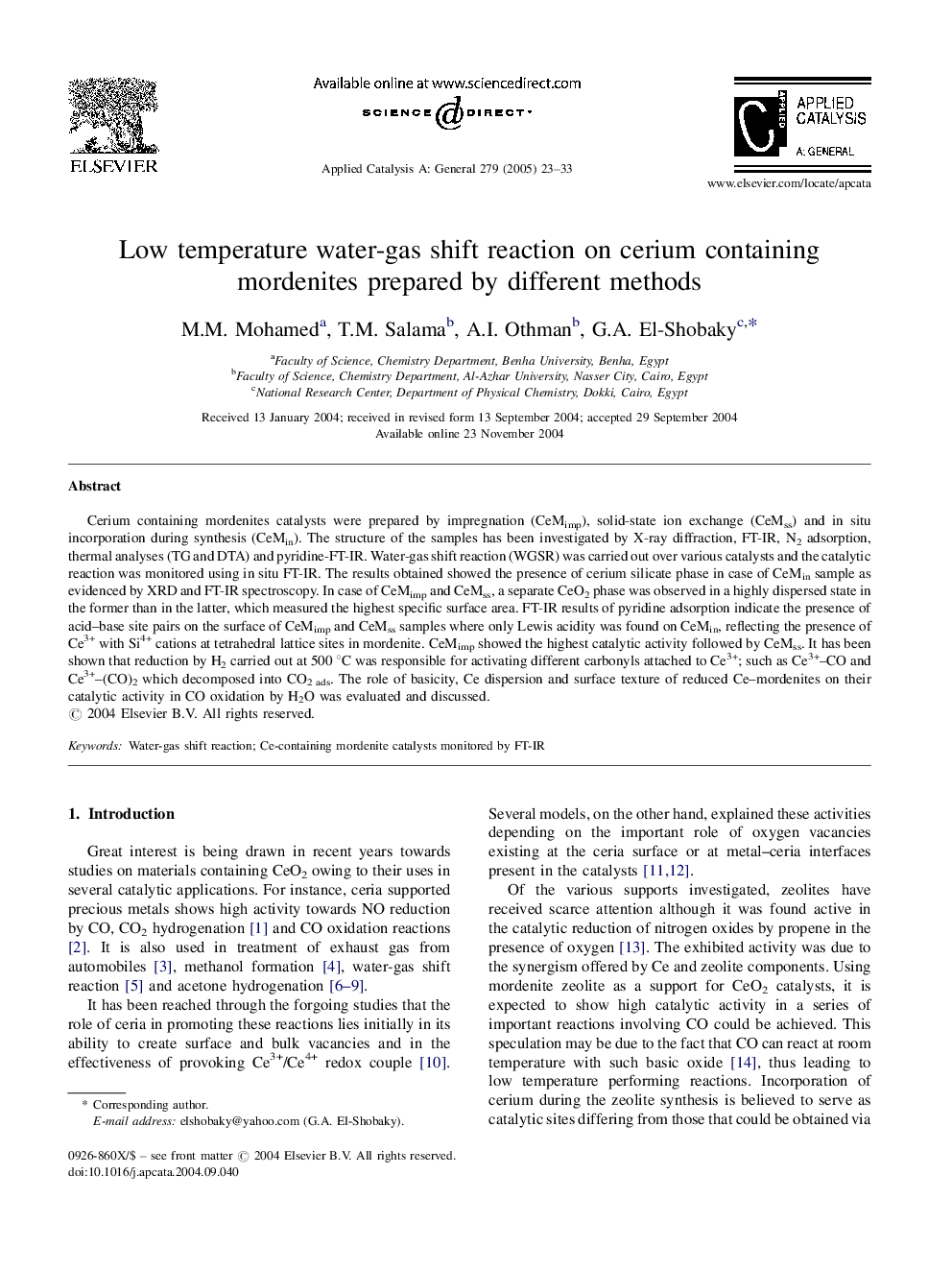| Article ID | Journal | Published Year | Pages | File Type |
|---|---|---|---|---|
| 9608131 | Applied Catalysis A: General | 2005 | 11 Pages |
Abstract
Cerium containing mordenites catalysts were prepared by impregnation (CeMimp), solid-state ion exchange (CeMss) and in situ incorporation during synthesis (CeMin). The structure of the samples has been investigated by X-ray diffraction, FT-IR, N2 adsorption, thermal analyses (TG and DTA) and pyridine-FT-IR. Water-gas shift reaction (WGSR) was carried out over various catalysts and the catalytic reaction was monitored using in situ FT-IR. The results obtained showed the presence of cerium silicate phase in case of CeMin sample as evidenced by XRD and FT-IR spectroscopy. In case of CeMimp and CeMss, a separate CeO2 phase was observed in a highly dispersed state in the former than in the latter, which measured the highest specific surface area. FT-IR results of pyridine adsorption indicate the presence of acid-base site pairs on the surface of CeMimp and CeMss samples where only Lewis acidity was found on CeMin, reflecting the presence of Ce3+ with Si4+ cations at tetrahedral lattice sites in mordenite. CeMimp showed the highest catalytic activity followed by CeMss. It has been shown that reduction by H2 carried out at 500 °C was responsible for activating different carbonyls attached to Ce3+; such as Ce3+-CO and Ce3+-(CO)2 which decomposed into CO2 ads. The role of basicity, Ce dispersion and surface texture of reduced Ce-mordenites on their catalytic activity in CO oxidation by H2O was evaluated and discussed.
Keywords
Related Topics
Physical Sciences and Engineering
Chemical Engineering
Catalysis
Authors
M.M. Mohamed, T.M. Salama, A.I. Othman, G.A. El-Shobaky,
